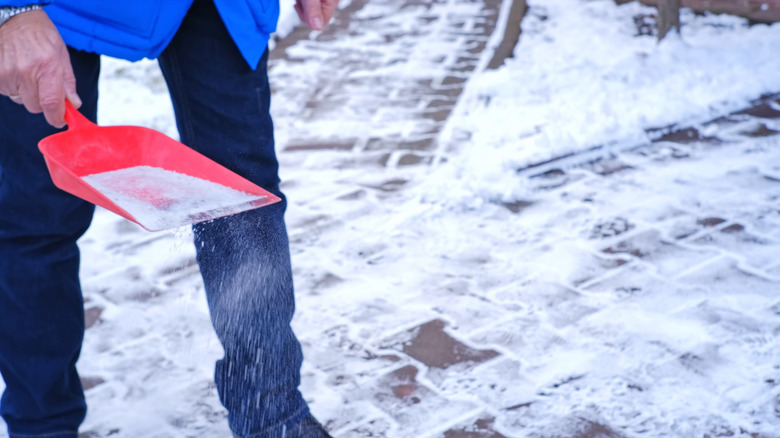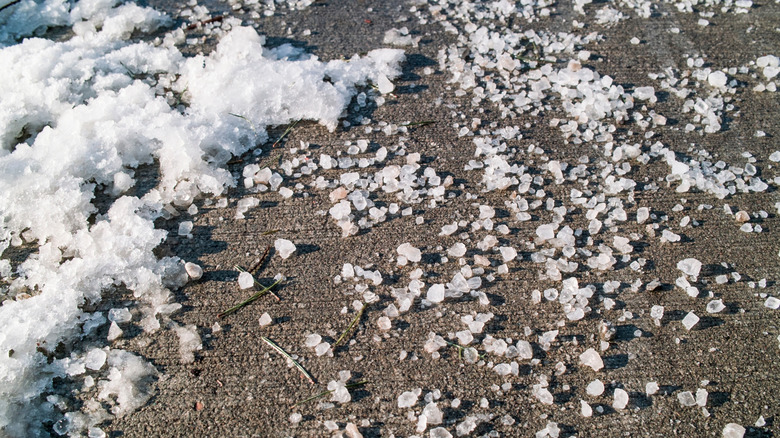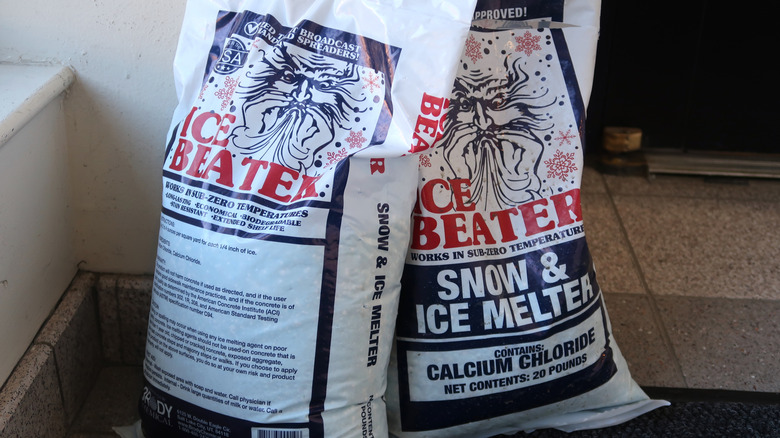How Long Is Ice Salt Good For After Opening?
The last thing anybody wants when a winter storm rolls in is to find that their bag of de-icing salt has turned into a solid, unspreadable block. You need those granules to be ready to use, right when you need them. And when you invest in a bag of ice melt, it's only natural to wonder if they will actually hold up and still be good enough to use next season once you open the bag. The great thing about ice salt is that, when it comes to spoilage, you don't have anything to worry about. The core components of this product are minerals that are technically chemically incapable of going bad and will remain usable, as long as you store them correctly.
The reason behind this longevity is simple science: The main ingredient in most de-icing products (especially rock salt) is a stable mineral known as sodium chloride. Since it contains no organic matter, it cannot degrade, decompose, or spoil over time, giving it a wonderful indefinite shelf life. This is the same scientific principle that has allowed salt to be used as a primary food preservative for thousands of years, as the pure chemical composition of salt makes it impossible for the mold or bacteria to grow. Therefore, an opened bag of it will never go bad or become unsafe in the traditional sense, although there are downsides of using too much de-icing salt. The real question then is not about its chemical viability, but whether it will remain effective for the next storm. You can confidently store your leftover salt, provided you take a few simple steps to protect its physical quality.
Not all ice salt is created equal, along with its shelf life
While pure rock salt (sodium chloride) never expires, some common de-icing products found at stores blend in extra chemicals, and they are what require proper storage. Rock salt is the cheapest and most common option; it's just coarse mineral salt, and its only enemy is moisture. The blends, however, are where things get interesting, as they often contain premium chemicals like calcium chloride, magnesium chloride, or potassium chloride, commonly used in pet-safe or fast-acting formulas. There are even the best types of ice melt to use on patio pavers, and other scenarios.
These additives are described as being "hygroscopic," which means they aggressively attract and absorb moisture directly from the surrounding air. This is certainly beneficial when the salt is on your driveway, as it creates a brine that melts ice faster, but when it's just sitting there in storage, this process is self-destructive. Once a bag of this stuff is opened, the salt starts drawing in moisture, which then causes the granules to bond together and eventually harden into an unusable block. The more of these hygroscopic chemicals your ice melt contains, the more important proper storage becomes. If it is not properly stored, a premature chemical reaction happens, and you are left with a blend that is less potent and that doesn't perform in freezing temperatures. So knowing which product you have (basic rock salt or a reactive chemical blend) is the first step toward long-term usability.
How to store ice salt for maximum usability
The hardening of de-icing salt is its biggest threat, and it begins the moment you open the bag. Fortunately, this problem is entirely preventable if you have airtight storage. The most important rule here is to move your opened ice salt from its original bag into a sealed, rigid container immediately after first use. Once opened, the original bag becomes increasingly less useful for future storms. We recommend a heavy-duty plastic storage bin with a locking lid or a clean 5-gallon bucket with a tight snap-on cover. Just make sure you choose something high-quality and avoid these storage products that aren't worth buying.
Naturally, your choice of storage location is just as important as the container. Store the salt in a cool, dry place like a garage, shed, or covered outdoor area. Another helpful step for keeping that freshness is to place the containers off the ground via shelves, or even something like wooden pallets or boards, since concrete floors can wick and hold moisture (which the salt will readily absorb). You should also try to keep your salt away from any humidity or water sources, like a laundry room or a leaky hose.
If your salt does harden, don't panic! The product is not expired; it may not be as effective as new ice salt, but it works in a pinch. Drop the bag on a hard surface or use a shovel or pry bar to break the block apart. And remember that practicing good storage habits ensures your leftover ice melt is ready to go whenever a cold snap arrives, saving you a frustrating last-minute trip to the store.


